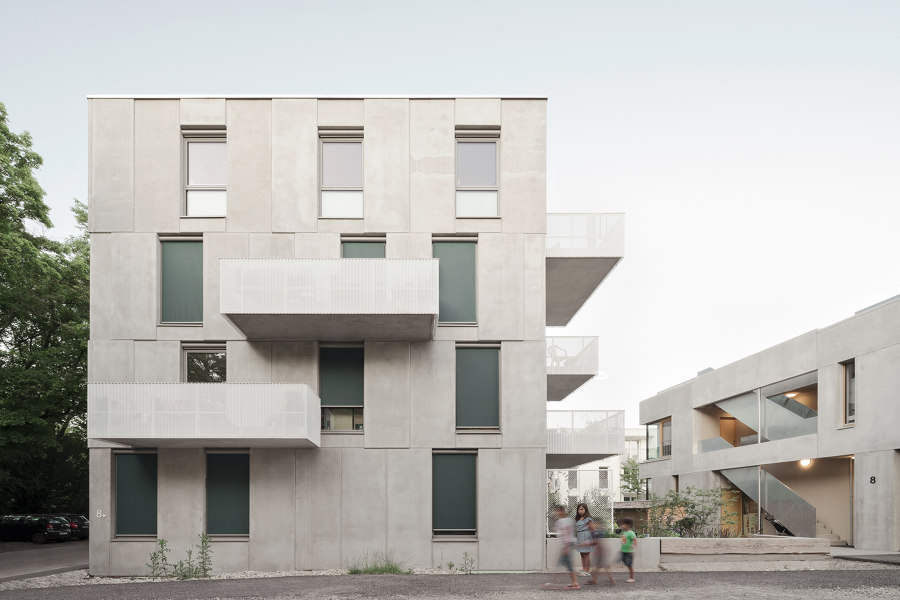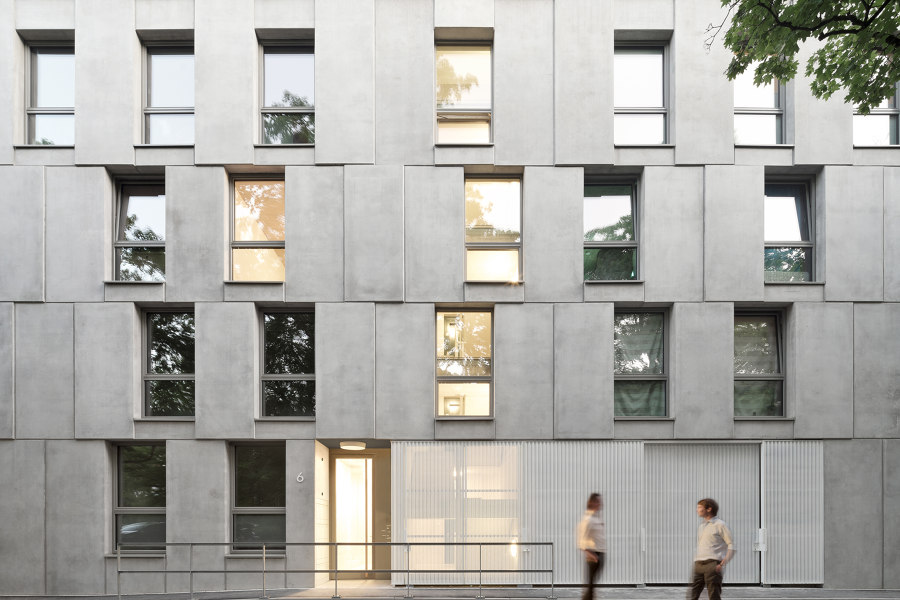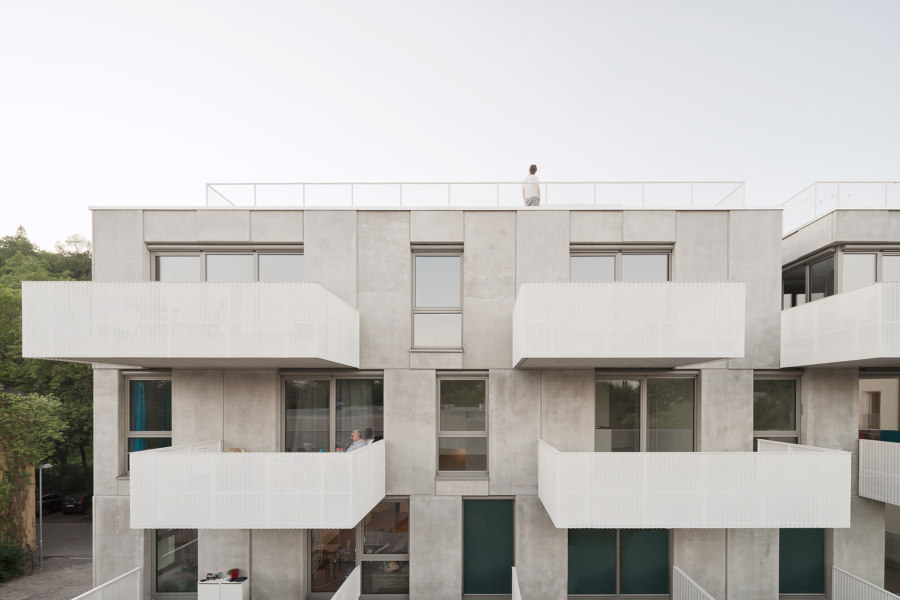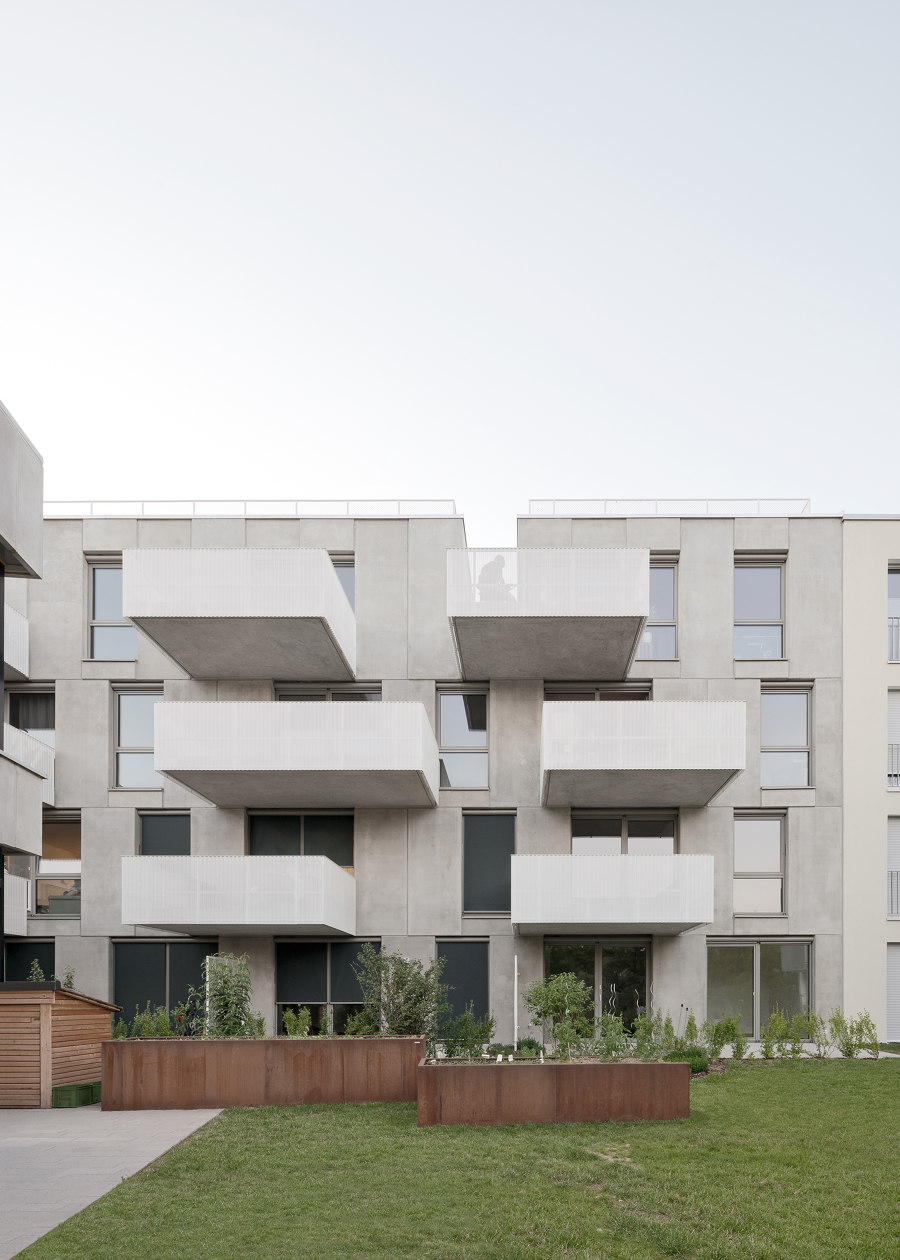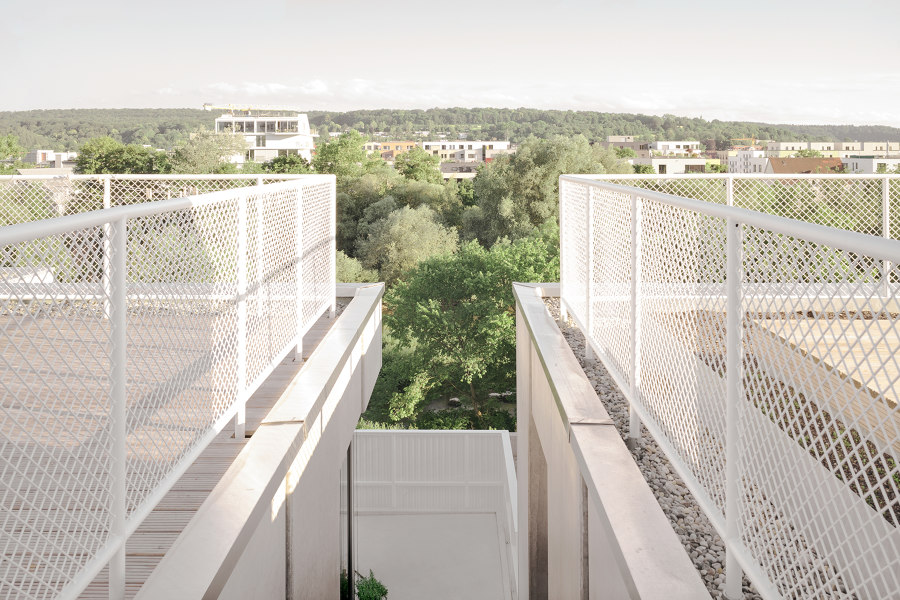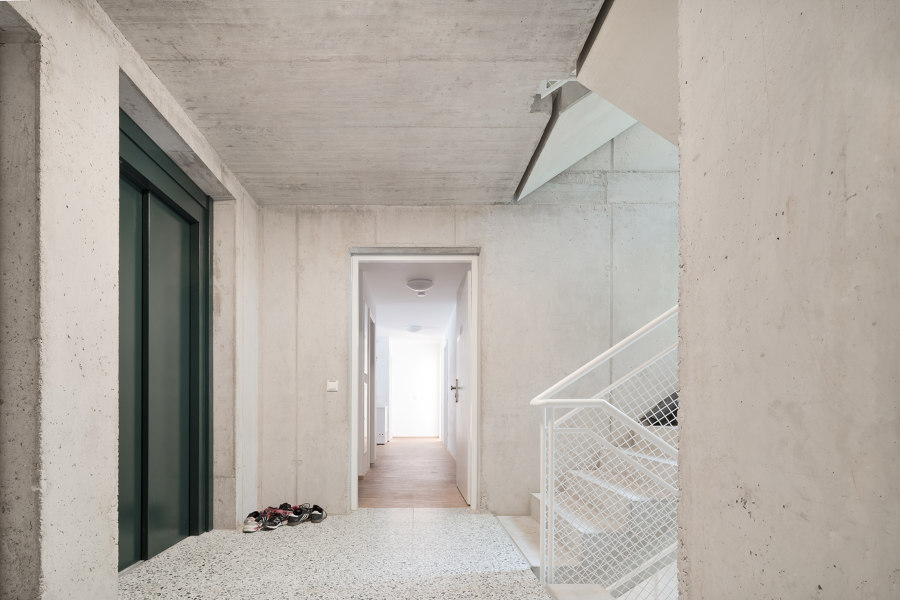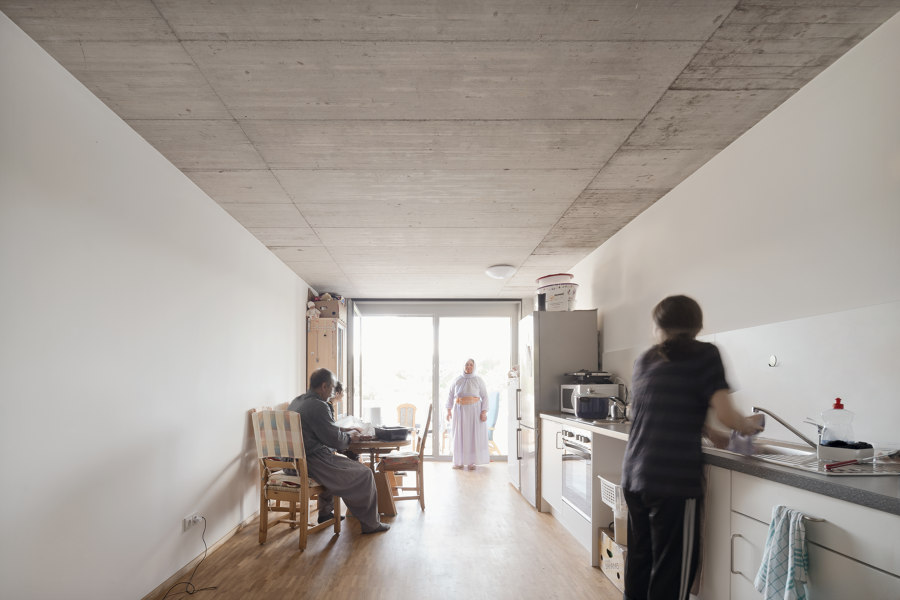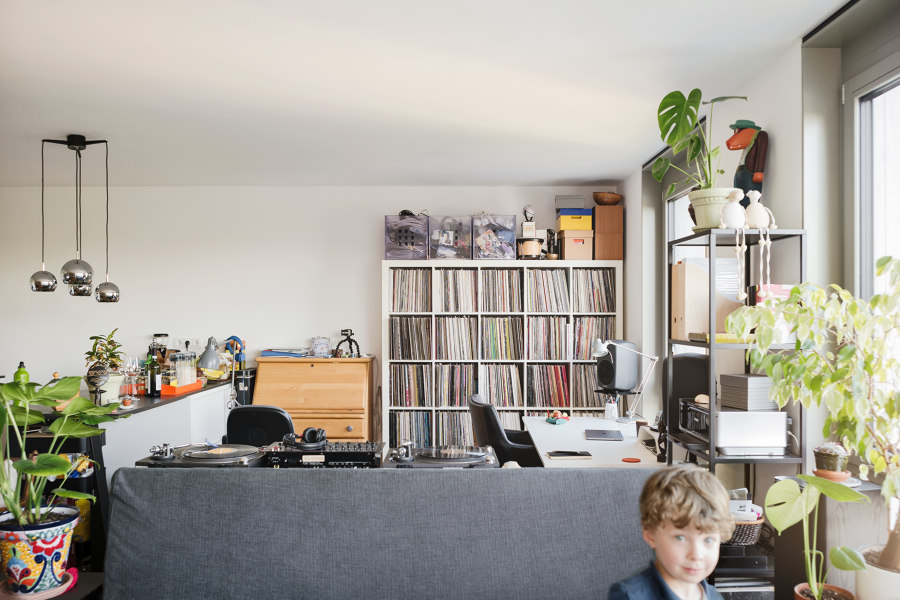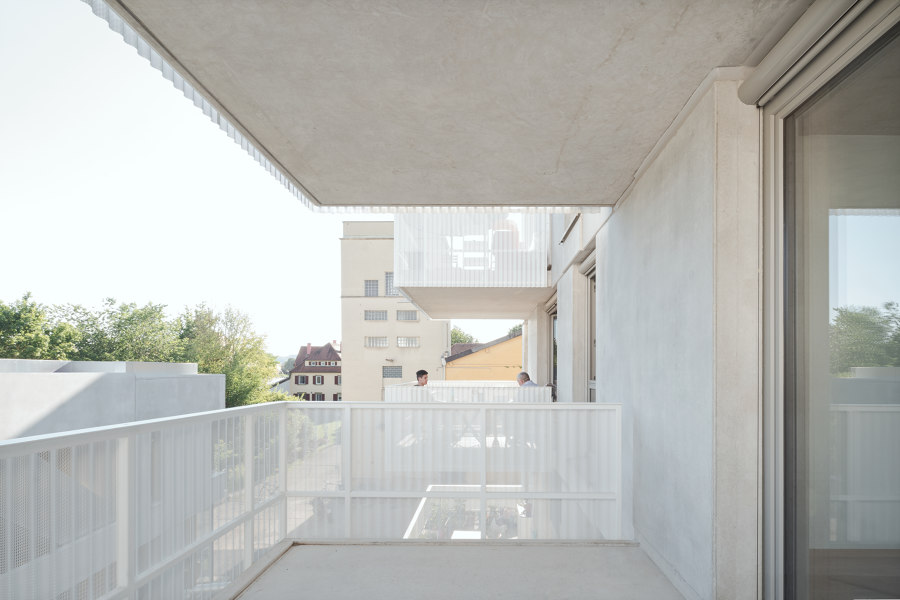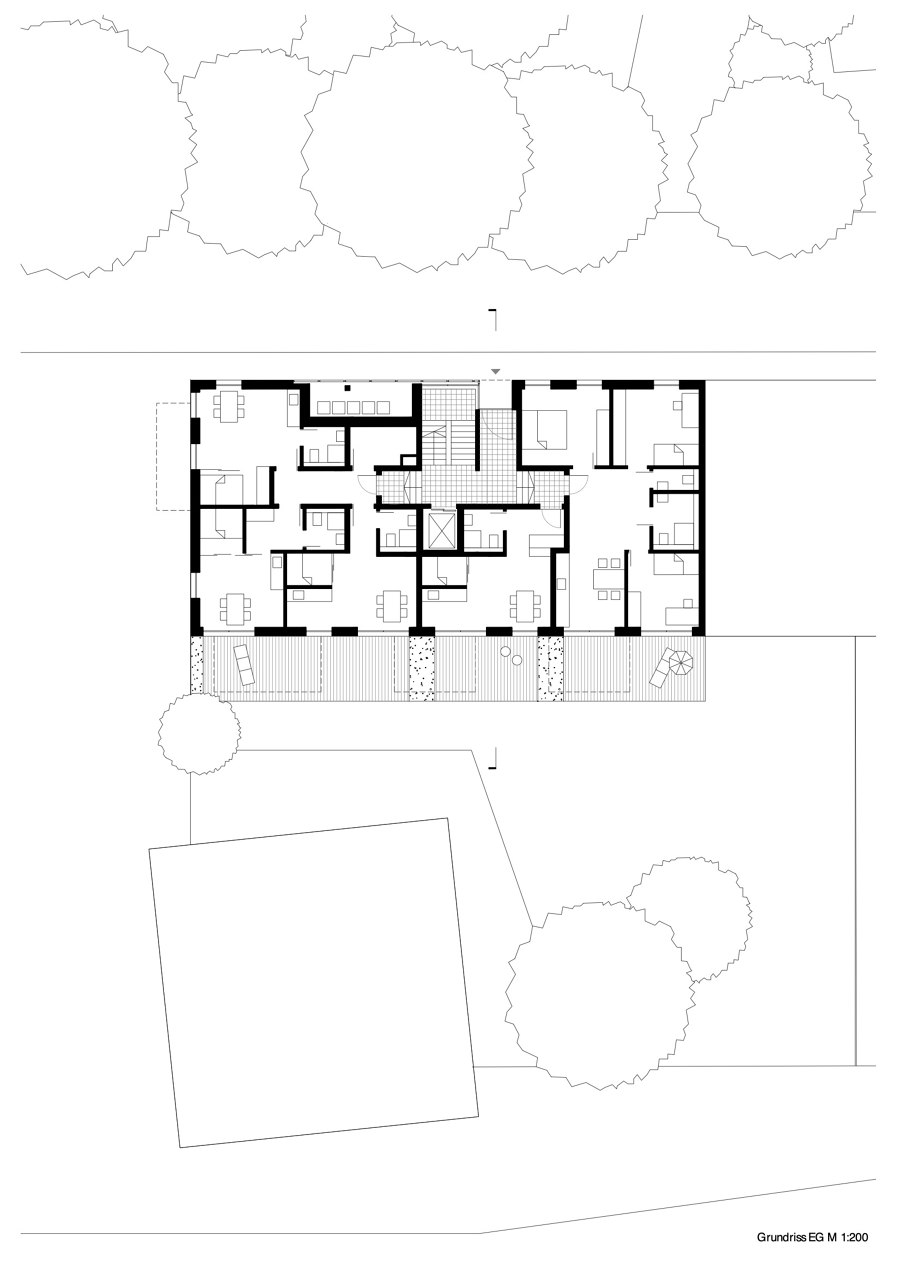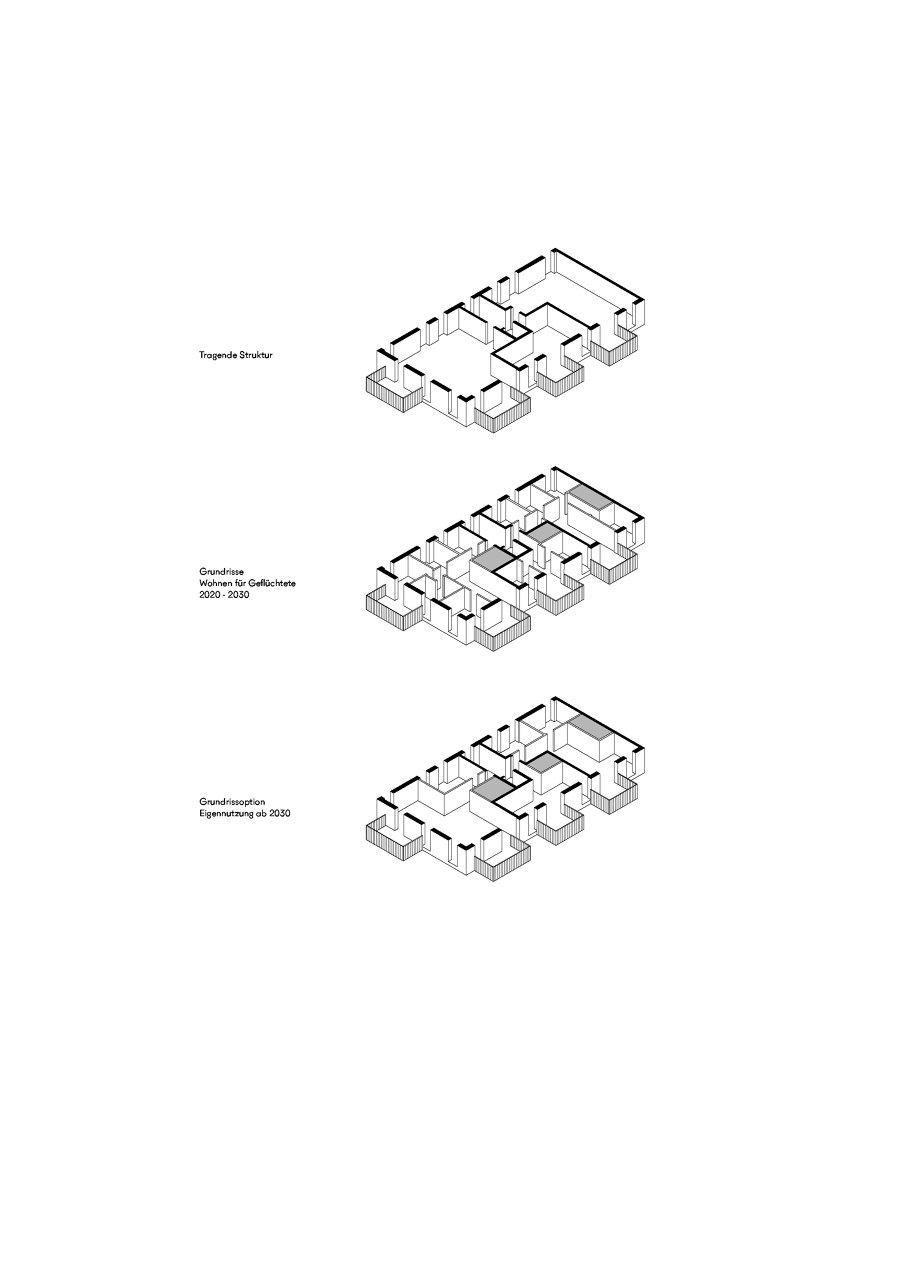Housing for All
In a prime location in Tübingen close to the river Neckar the housing project of the private joint building venture Wolle+ is testing new strategies and housing concepts for the integration of people from diverse social environments and cultural backgrounds with very different standards of living and income levels. The socially responsible housing project Wolle+ in which the housing sociologist Dr. Gerd Kuhn played a pivotal role reacts directly to the housing requirements and social and communicative needs of refugees, but also wants to pursue the adaptive concept of Housing for All.
The complex consists of the Haus am Park and, directly in front of it, the Brückenhaus. With twelve different residential units, the Haus am Park provides the main residential focus, while the Brückenhaus offers a neighbourhood centre on the ground floor which is also open to local residents, creating benefits for the whole neighbourhood. It is complemented by cluster apartments for single parents within a flat share on the upper floor. The diversity of the users and players is also reflected in the architectural team: SOMAA and Yonder are jointly developing the Haus am Park, while Simon Maier from Tübingen is responsible for the Brückenhaus.
From the very beginning the Haus am Park has aimed for a maximum mix of different housing types: owner-used apartments on the penthouse floor, housing for refugees on the other floors as well as micro-housing units for unaccompanied, underage refugees on the ground floor who are taken care of by the kit-jugendhilfe association. And the whole thing is owned and financed by a group of twelve private individuals
Some of the apartments initially used by refugees will be transferred to owner-occupancy after ten years while others will retain their welfare housing status for another five to ten years. In return, the city of Tübingen sold the municipal plot below the overheated market price. The ambitious social agenda of the project secured success for the joint building venture Wolle+ in the bid for the plot which as usual was held by the city as a conceptual process rather than purely price-driven tendering procedure.
The load-bearing elements have been reduced to a minimum in the robust architectural structure. This enables versatile floor plans and residential uses to adapt to changing living requirements and therefore creates long-term sustainability. An apartment for refugees with up to 6 rooms can be turned into an open loft, the micro-housing units can be connected to form a student flat share.
The outer wall of core-insulated prefabricated concrete elements is the primary load-bearing component. Its prominent position in the tectonics of the building is expressed in the regular pattern in which the uniform concrete formats project and recede from the façade and the way they are offset floor-by-floor, similar to a masonry bond. Through the formal emphasis of the structure, it is both construction and cladding. Rhythmically placed windows fit into the grid.
The formal precision, the focus on selected spatial elements and the reduction to just a few different materials create a spatial quality and character that benefits all users equally, even within the tight budget. On arrival, the extra-high, retracted entrance area already conveys a spatial generosity. Raw concrete, greenish terrazzo tiles and the white-painted railing create the atmospheric framework in the staircase between light elegance and robust rigidity. In the apartments, large, floor-to-ceiling openings in all rooms create a bright, friendly atmosphere and bring the lush old tree population north of the building into the interior. Deep balconies face the river Neckar, extending the apartments with their own fully-fledged outdoor space. The light, wavy, white cladding of the balustrades creates both privacy and views thanks to the fine perforation of the sheet metal.
Only the roof terraces are reserved for the residents of the top floor. Apart from that, the usual hierarchy from unattractive street flats to luxury penthouses gives way to a sophisticated, egalitarian design principle in order to provide an appropriate architectural framework for Housing for All, which genuinely allows the most diverse groups of residents to live together.
Design team:
Hadi A. Tandawardaja
Tobias Bochmann
In Cooperation with:
Yonder – Architecture and Design
client:
Private Bauherrengemeinschaft Wolle+
